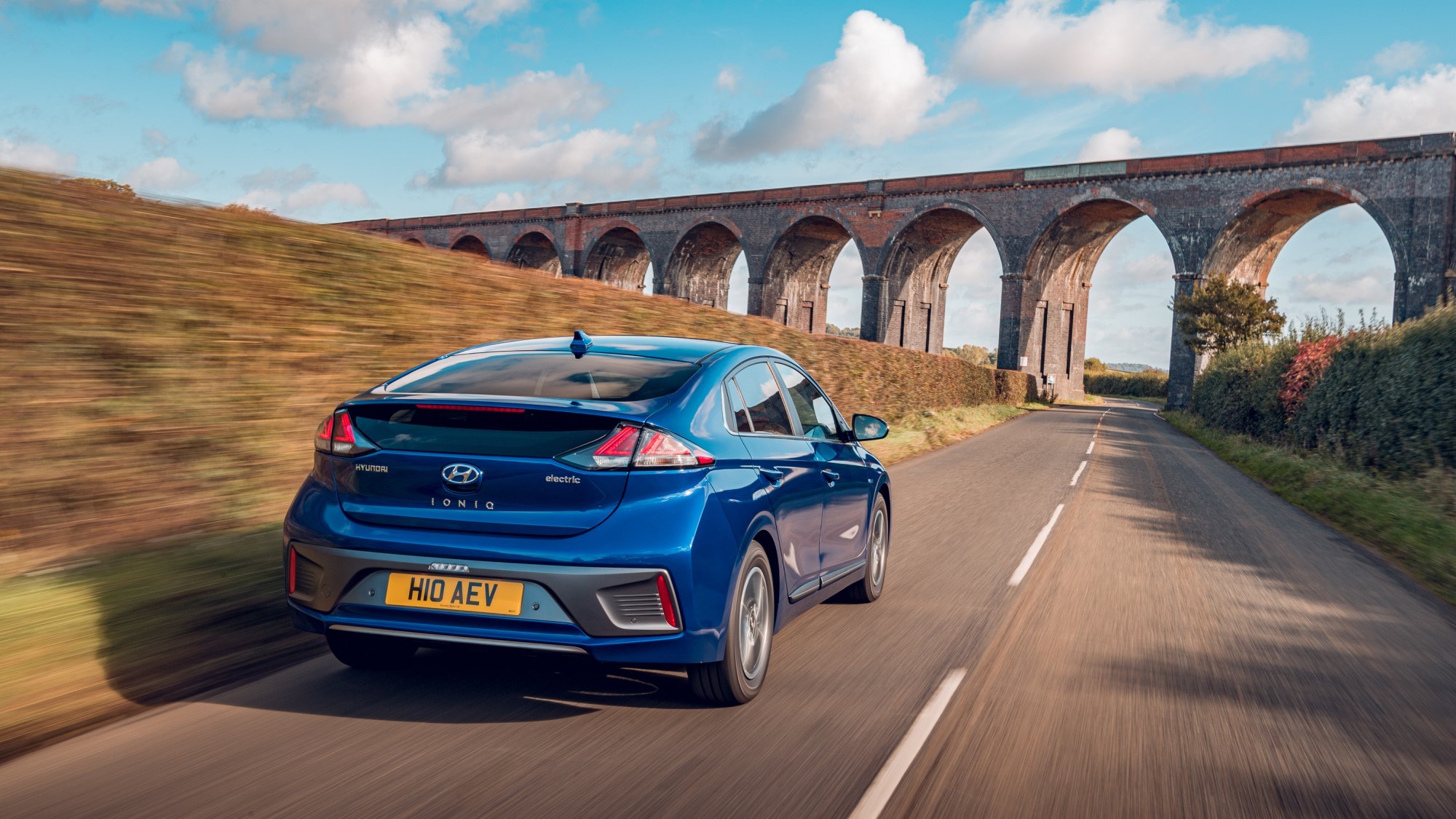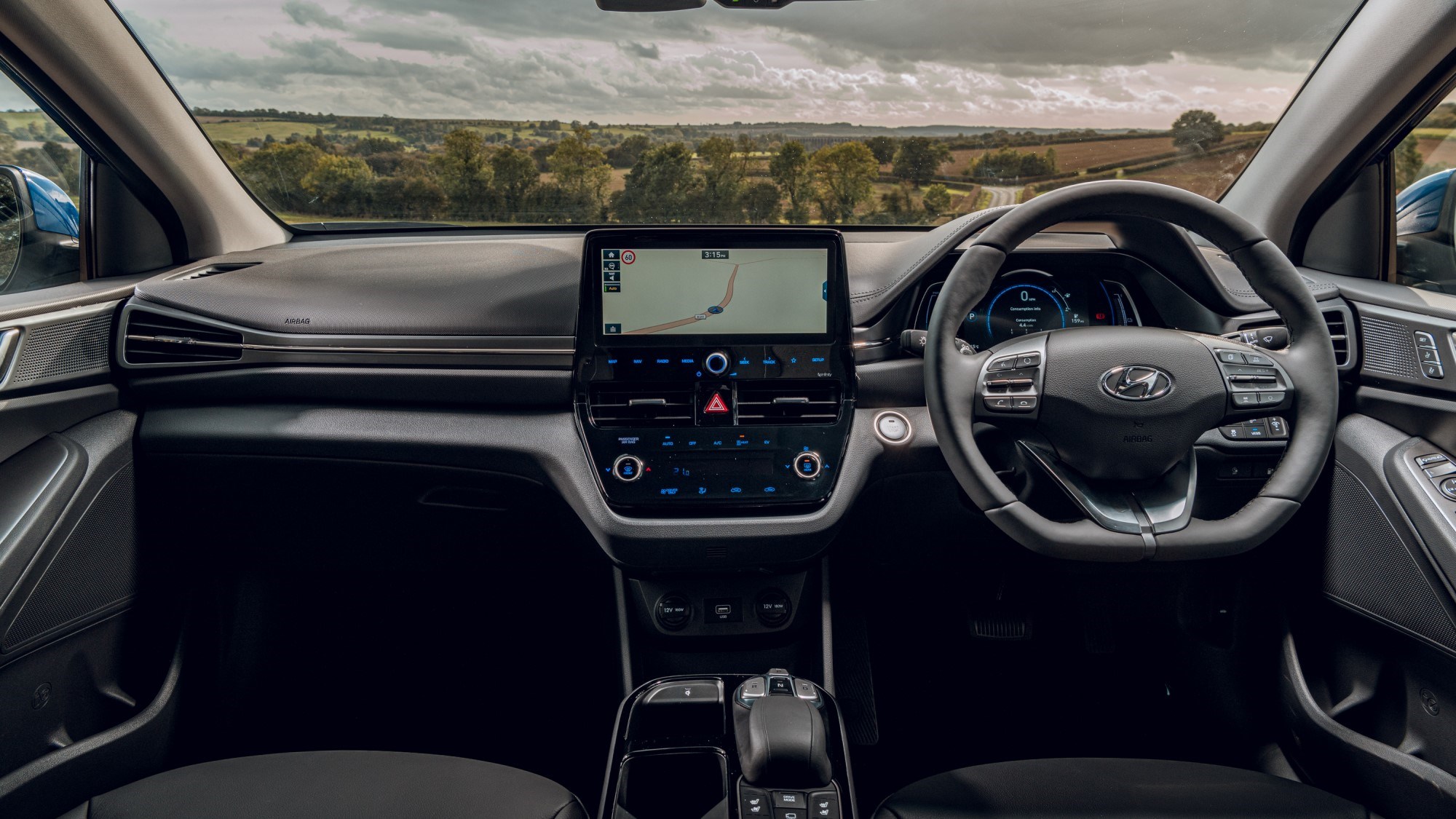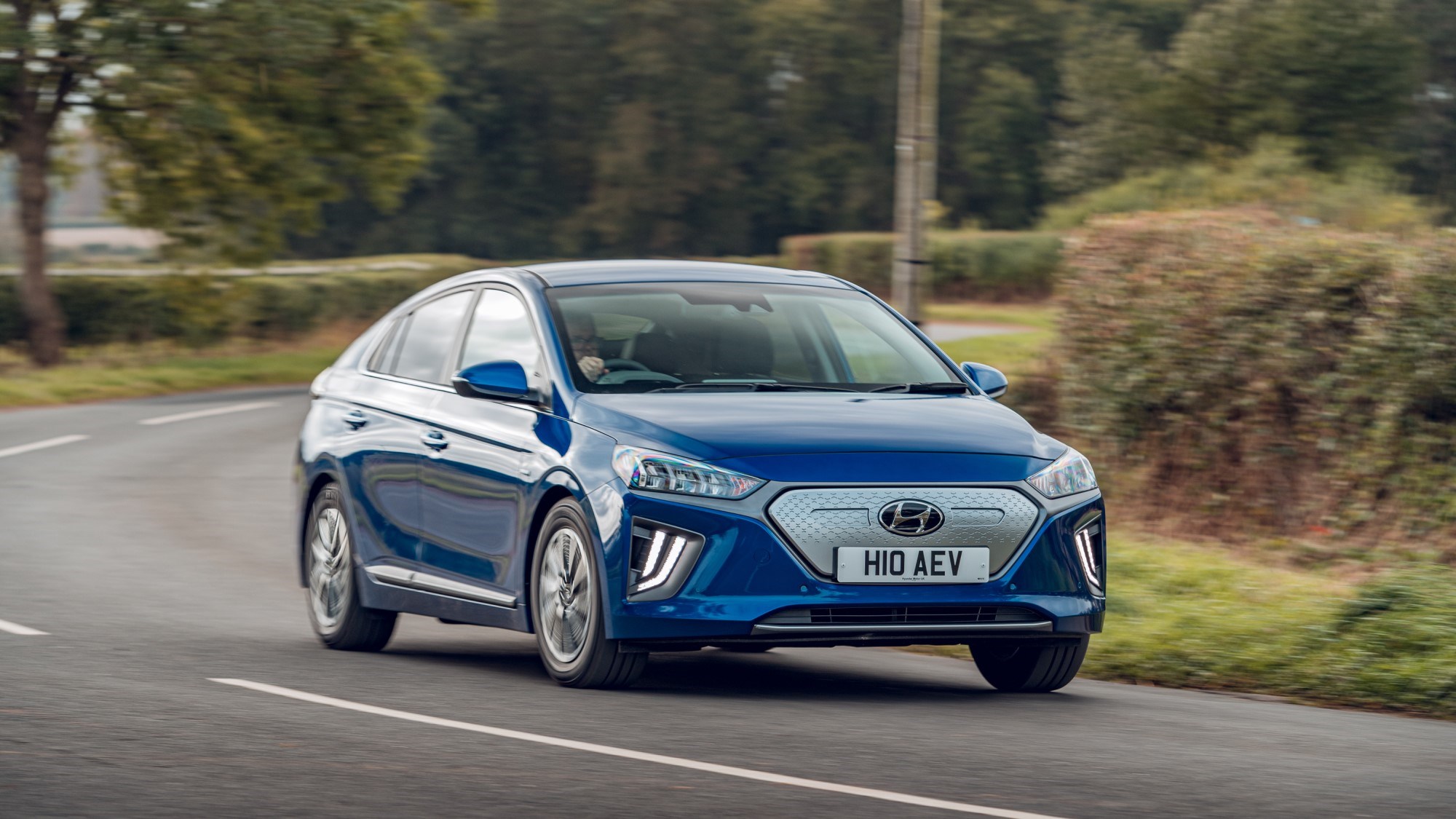► A well-priced EV that’s not too outlandish
► Good-ish range and practical bodystyle
► Not as good as competition
As far as fabricated names go, Hyundai’s Ioniq sounds about right. It’s a bit iconic (or maybe ironic), has ion in it, which ticks off the electric box, and it has the letter q in it, signifying that it’s futuristic.
The Ioniq electric has been around since 2016, but did you know Ioniq is a whole electric sub brand rather than just a nameplate? Ioniq, or IONIQ as Hyundai has been referring to it lately, is technically Hyundai’s ploy at getting young people behind the wheel of its cars. Two models, a hatch and an SUV, are coming to the UK under the name in the next few years.
But back to this Ioniq. It’s one third of a trident, the other two being a hybrid and a plug-in hybrid. It starts from just over £30,000 (or around £300 per month) and the official WLTP range is 193 miles. Its main rivals are the Tesla Model 3, Nissan Leaf and the MG ZS EV, as well as in-house siblings the Kia e-Niro and Hyundai Kona Electric.
It sets itself apart from the crowd, especially the Tesla, by slipping completely under the radar. It doesn’t have a die-hard fan club of internet trolls, it simply attracts buyers who don’t want to shout about their eco-aspirations.
It’s also totally possible that some upselling could be going on. After all, if you’re drawn into the showroom by a hybrid or plug-in Ioniq, how much more persuasion will you need to go the whole hog?

But is it any good?
Starting outside the car, signs are encouraging. While the Ioniq’s aerodynamic shape is very akin to that other eco-champion, the Toyota Prius, it’s a more sober affair. Were it not for the blanked-out grille this would definitely pass for a conventionally-powered vehicle.
Best electric cars 2020
Cheapest electric cars
It’s more of a mixed bag on the inside, at least in the latest, facelifted model. Hyundai’s sacrificed a lot of the function it’s usually so good at in favour of unnecessary stylistic touches. Air-con controls, for example – they’re touch-sensitive, simultaneously failing to provide either the tactility of a conventional button or the configurability of a touchscreen. There’s even ambient lighting, after a fashion – it’s piercingly bright blue and immensely distracting.
What are the numbers like?
The original car’s 28kWh battery pack has been upgraded to a 38.3kWh unit, giving a total range of 193 miles on the WLTP cycle. That’s not spectacular, to be honest. It beats out the MG ZS EV’s 163 miles, sure, but that car is a lot cheaper. The bigger concern is how soundly the Ioniq Electric is whooped by not only the similarly-priced Nissan Leaf’s 239-mile WLTP range, but its sister vehicle – the Kona Electric, which offers up 279 miles of range per charge.

A mere 134bhp makes it seriously down on power compared with those two, as well. A rapid charge from a 100kW station will take the charge up to 80% in 54 minutes. A 7kW wallbox, like the one you’d have installed at home, will do the same in just over six hours.
Numbers aren’t everything, though…
They’re not, and the Ioniq makes the best of them. This is a really relaxed car to drive – set off in near-silence via the drive select buttons and you’ll enjoy a very cushioned ride, not always a given in a heavy EV.
The benchmark 0-62mph sprint takes 9.7 seconds, as always feeling very nippy up to 40mph or so before tailing off as it gets towards the legal limit. There’s plenty of pep round town and enough performance to overtake at motorway speeds. In fact, you’ll get about 200 yards before concluding this is how the Ioniq is supposed to be.
Hyundai fits four-stage regenerative braking, with the strongest setting providing a one-pedal driving experience similar to the Nissan Leaf’s e-Pedal. However, you have to pull back on the left-hand steering column paddle to come to a complete halt, making it slightly less intuitive to use.

It’s rather roly-poly through the corners and there’s little in the way of steering feel, but generally accurate steering and a really nicely cushioned ride – especially on 16-inch wheels – mean you’ll have no arguments with the comfort levels.
Is it roomy?
Driver and front passenger have room to stretch out, but that sloping aerodynamic roofline means headroom is limited for six-footers in the back.
Legroom’s not bad, though, and you get wide-opening rear doors and two Isofix points to aid with carrying children.
Boot space isn’t terrible either, running 357 litres – slightly smaller than the Hyundai i30. That’s due mainly to the bigger battery pack – the regular Hybrid model has a 443-litre boot – but in practice it’s wide and flat with a nice big opening, making it a cinch to load or unload.
Why wouldn’t I just buy a Kona Electric, though?
Well, the Kona Electric’s starting price is a little cheaper than the Ioniq’s, but that’s with the same powertrain – and reduced range of 160 miles as a consequence. The Kona you want has a 64kWh battery pack and costs around £5,000 more than the Ioniq. For that you do get an impressive 279 miles of range, though, plus a zippy 201bhp motor, so it’s not as if the extra money is misplaced.

The Kona Electric has a more fashionable crossover silhouette plus a higher driving position – both desirable features. The Ioniq Electric feebly hits back with a slightly more premium-feeling interior and subtler styling.
In the interests of futureproofing, we’d be heading over to the Kona every time – the extra outlay is well worth the additional cost.
Verdict
A good car in isolation. But the Ioniq Electric suffers because, while its own development has plodded along, the competition has come along in leaps and bounds. What was once thoroughly middle-of-the-pack now languishes somewhere near the bottom in terms of performance and range, but unfortunately doesn’t make that more palatable with a super-low price tag.
For a few pounds more, you could have a Kia e-Niro – for a few pounds less, a Nissan Leaf. Both offer superior range and performance without sacrificing anything else. If you find a good deal on an Ioniq Electric then you’re unlikely to be disappointed by this comfortable, spacious car, but we definitely recommend checking elsewhere first.